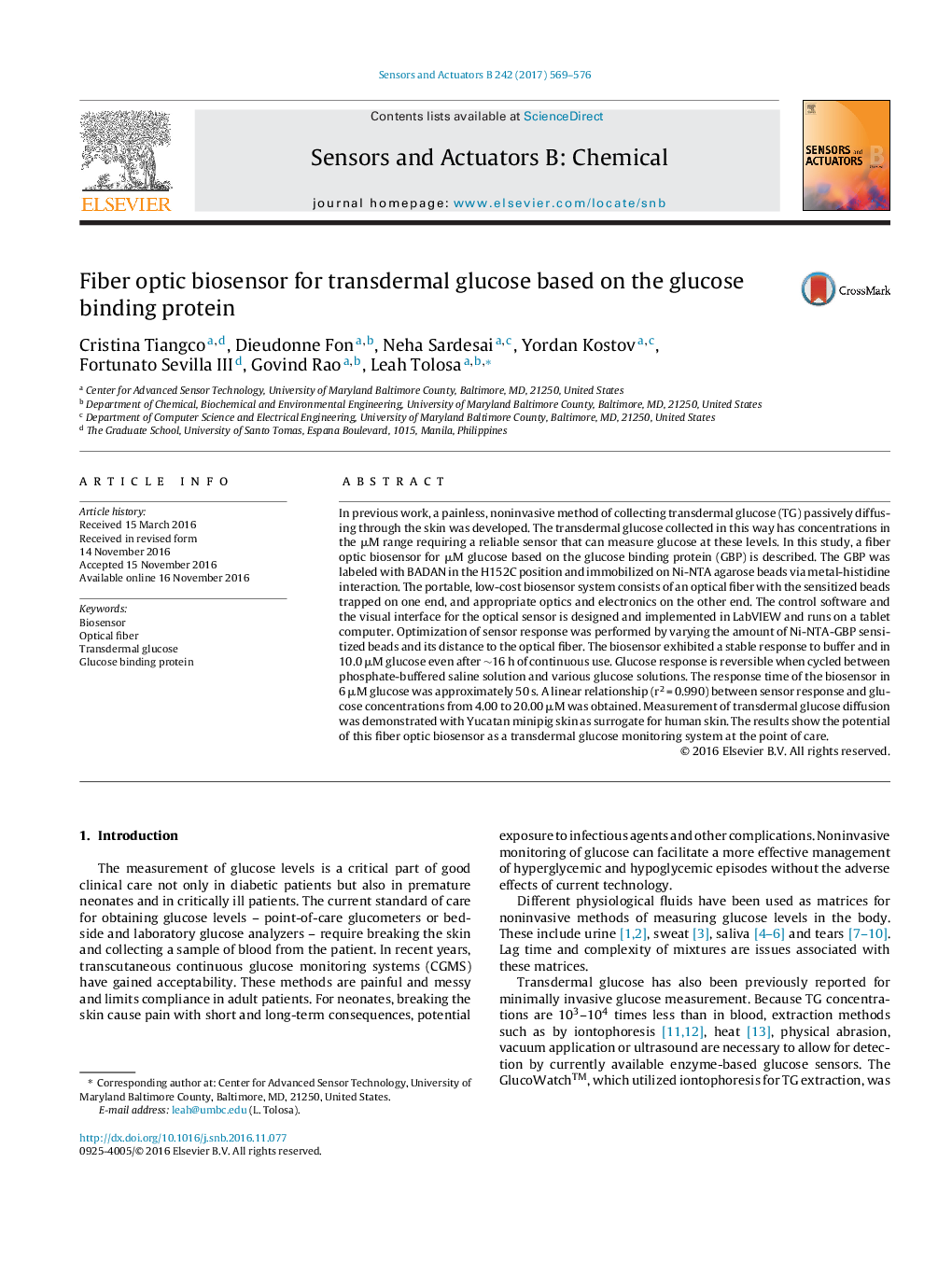| Article ID | Journal | Published Year | Pages | File Type |
|---|---|---|---|---|
| 5009718 | Sensors and Actuators B: Chemical | 2017 | 8 Pages |
Abstract
In previous work, a painless, noninvasive method of collecting transdermal glucose (TG) passively diffusing through the skin was developed. The transdermal glucose collected in this way has concentrations in the μM range requiring a reliable sensor that can measure glucose at these levels. In this study, a fiber optic biosensor for μM glucose based on the glucose binding protein (GBP) is described. The GBP was labeled with BADAN in the H152C position and immobilized on Ni-NTA agarose beads via metal-histidine interaction. The portable, low-cost biosensor system consists of an optical fiber with the sensitized beads trapped on one end, and appropriate optics and electronics on the other end. The control software and the visual interface for the optical sensor is designed and implemented in LabVIEW and runs on a tablet computer. Optimization of sensor response was performed by varying the amount of Ni-NTA-GBP sensitized beads and its distance to the optical fiber. The biosensor exhibited a stable response to buffer and in 10.0 μM glucose even after â¼16 h of continuous use. Glucose response is reversible when cycled between phosphate-buffered saline solution and various glucose solutions. The response time of the biosensor in 6 μM glucose was approximately 50 s. A linear relationship (r2 = 0.990) between sensor response and glucose concentrations from 4.00 to 20.00 μM was obtained. Measurement of transdermal glucose diffusion was demonstrated with Yucatan minipig skin as surrogate for human skin. The results show the potential of this fiber optic biosensor as a transdermal glucose monitoring system at the point of care.
Keywords
Related Topics
Physical Sciences and Engineering
Chemistry
Analytical Chemistry
Authors
Cristina Tiangco, Dieudonne Fon, Neha Sardesai, Yordan Kostov, Fortunato III, Govind Rao, Leah Tolosa,
